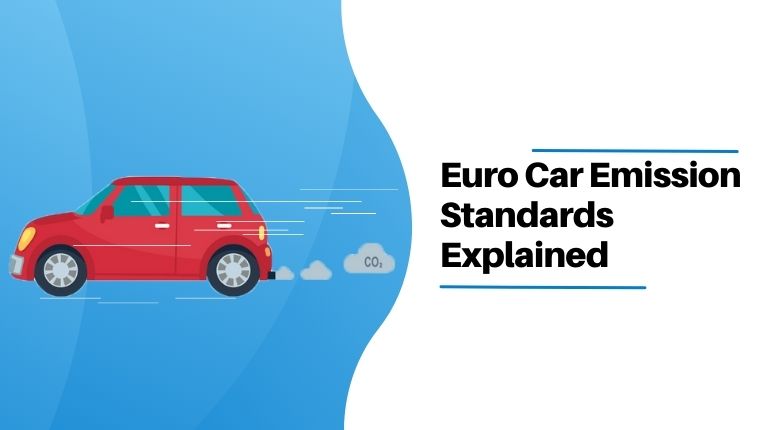International Car Emission Standards: A Comprehensive Guide
اخر تعديل: 2025-12-15 الكاتب: Sarah
[Car Tech Knowledge/ XNmotors]
Car emission standards are crucial regulations aimed at minimizing the environmental impact of vehicles by controlling the amount of pollutants they emit.
Various countries and regions around the world have established their own standards, which serve as benchmarks for automakers to ensure that vehicles are less harmful to both air quality and human health.

Credits: Google Search
Some Major International Emission Standards include:
1. European Union (EU) Standards: Euro Emissions
- The EU has one of the most stringent and comprehensive car emission standards globally, known as "Euro" standards.
- The standards started with "Euro 1" in 1992 and have since progressed to "Euro 7," which is expected to come into effect around 2025.
1. Euro 1 (1992):
For passenger cars—91/441/EEC.
Also for passenger cars and light lorries—93/59/EEC.
2. Euro 2 (1996) for passenger cars—94/12/EC (& 96/69/EC)
For motorcycle—2002/51/EC (row A)[16]—2006/120/EC
3. Euro 3 (2000) for any vehicle—98/69/EC
For motorcycle—2002/51/EC (row B)[16]—2006/120/EC
4. Euro 4 (2005) for any vehicle—98/69/EC (& 2002/80/EC)
5. Euro 5 (2009) for light passenger and commercial vehicles—715/2007/EC
6. Euro 6 (2014) for light passenger and commercial vehicles—459/2012/EC
7. Euro 7 (2030 to 2031)
- Euro standards limit emissions such as CO₂, NOₓ, and PM. Over the years, each new stage has tightened these limits, forcing manufacturers to develop more advanced emission-control technologies like selective catalytic reduction (SCR) and particulate filters.
2. United States: EPA and California Standards
- In the U.S., the Environmental Protection Agency (EPA) sets federal emission standards known as "Tier" standards. The current "Tier 3" standards were implemented from 2017 onwards, aiming for reduced NOₓ, CO₂, and PM emissions.
- California, under the California Air Resources Board (CARB), has its own, stricter standards compared to the federal regulations. CARB's regulations have driven innovation and have often been adopted by other states as well.
3. China: China National Standards
- China, facing severe air quality issues, has rapidly upgraded its vehicle emission standards. The "China" standards are largely modeled after the EU’s Euro standards.
- Currently, China is implementing the "China 6" standard, which is equivalent to Euro 6. China 6 was rolled out in phases, starting in 2020, with stricter limits for major pollutants like NOₓ and PM.
4. Japan: J-LEV and Post New Long-Term Standards
- Japan has implemented stringent emission standards, focusing on technologies like hybrid and electric vehicles to reduce emissions.
- Japan’s standards include the "Post New Long-Term" standards, which are similar to Euro 6. Additionally, Japan has a unique classification for low-emission vehicles known as J-LEV (Japan Low Emission Vehicle), which incentivizes automakers to develop cleaner technologies.
5. India: Bharat Stage (BS) Standards
- India follows the "Bharat Stage" (BS) emission norms, which are similar to the Euro standards.
- In 2020, India leapfrogged from BS-IV to BS-VI, skipping BS-V to align with Euro 6 standards. BS-VI brought about significant changes, such as the use of advanced catalytic converters and improved fuel quality to reduce NOₓ and PM emissions.
6. Australia: ADR Standards
- Australia follows the Australian Design Rules (ADR), which are closely aligned with European standards.
- The country currently follows emission standards equivalent to Euro 5, but there are plans to adopt stricter Euro 6 standards in the near future to further reduce harmful emissions.
The Importance of Car Emission Standards
The transportation sector is one of the major contributors to greenhouse gas emissions and air pollution. Carbon dioxide (CO₂), nitrogen oxides (NOₓ), particulate matter (PM), and hydrocarbons are some of the primary pollutants emitted by vehicles, which contribute to climate change, respiratory diseases, and environmental degradation. Emission standards are regulations set by governments to limit these pollutants, encouraging automakers to adopt cleaner technologies.
Conclusion
International car emission standards are critical in the global fight against climate change and air pollution. By setting increasingly stringent limits on pollutants, these standards push automakers toward cleaner technologies, including electrification. As nations continue to address the environmental impacts of transportation, car emission standards will remain a key tool in ensuring cleaner air and a healthier planet.
( Article / XNmotors Sarah )
التعليقات
https://je-tal-marketing-910.lon1.digitaloceanspaces.com/research/je-marketing-(425).html Mother of the groom clothes are down to personal choice on the day.
https://je-tal-marketing-885.lon1.digitaloceanspaces.com/research/je-marketing-(65).html Adhere to the costume code, and look to bridesmaids or the marriage robe for steerage on bold patterns or embellishments.
https://je-tal-marketing-983.lon1.digitaloceanspaces.com/research/je-marketing-(296).html Don't be afraid to make a statement in head-to-toe sparkle.
https://je-tal-marketing-959.lon1.digitaloceanspaces.com/research/je-marketing-(378).html You need her to feel snug on the massive day—especially when it is time for marriage ceremony photos.
https://je-tal-marketing-911.lon1.digitaloceanspaces.com/research/je-marketing-(361).html Most important thing is that you’re comfy and never going to over heat.
https://je-tal-marketing-930.lon1.digitaloceanspaces.com/research/je-marketing-(270).html But for others, it’s restrictive, it feels too formal, and sometimes, it ends up being somewhat costly too.
https://fr-size.nyc3.digitaloceanspaces.com/research/%EF%B8%8F-small-(228).html Our top-rated sizes vary from 00 – 32 to additionally embody petite merchandise.
https://je-tal-marketing-979.lon1.digitaloceanspaces.com/research/je-marketing-(139).html In general, you’ll do your greatest to keep away from matching with the bridesmaids or the moms of the couple getting married.
https://fr-size.nyc3.digitaloceanspaces.com/research/%EF%B8%8F-small-(348).html And finally, don’t fear about looking to only ‘age-appropriate’ boutiques.
https://je-tal-marketing-889.lon1.digitaloceanspaces.com/research/je-marketing-(89).html This two-piece silhouette fashion flows fantastically over the physique and has a v-shaped back opening that closes with a concealed zipper.